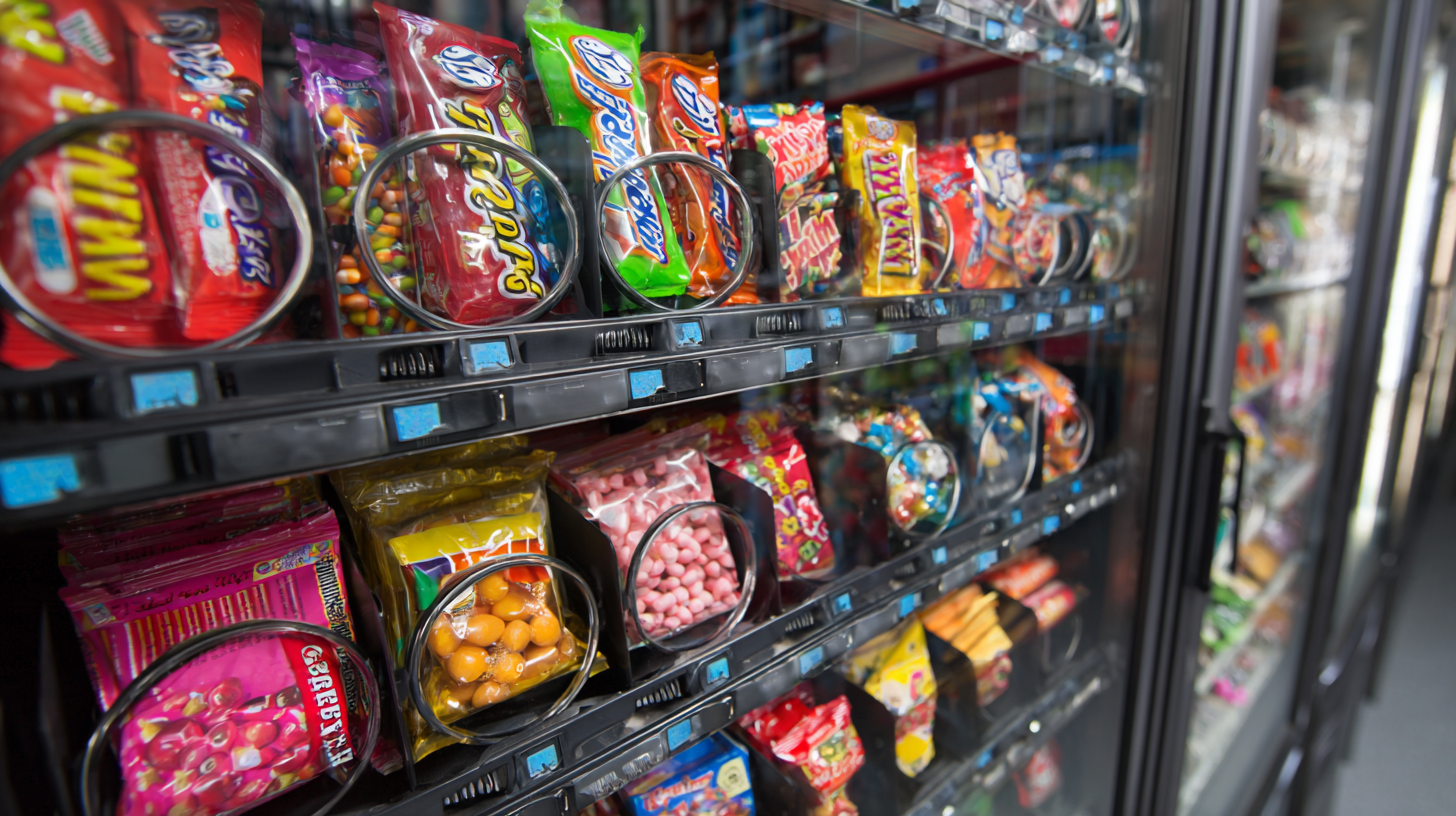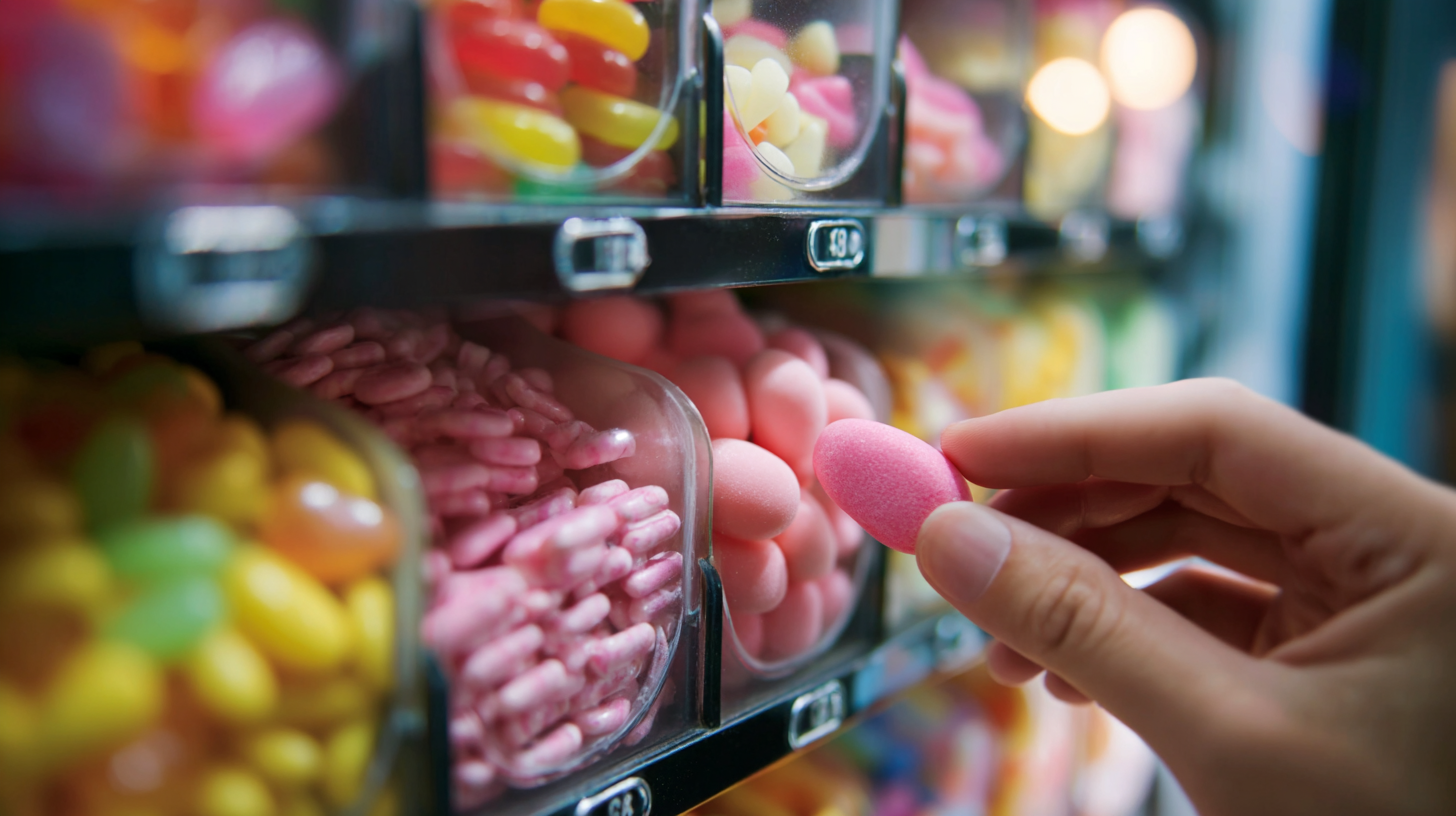Understanding Best Candy Vending Machine Production Standards and How to Choose the Right One
In the rapidly evolving landscape of the vending machine industry, understanding best production standards for candy vending machines is crucial for operators and entrepreneurs alike. According to the National Automatic Merchandising Association (NAMA), the vending machine industry is projected to reach a market value of $25 billion by 2024, with candy vending machines representing a significant segment of this growth. As consumer preferences shift towards more unique and healthier options, it's essential to consider factors such as design, efficiency, and compliance with safety standards when selecting the right candy vending machine. This ultimate guide will explore the critical production standards that define quality in the industry, helping you make informed decisions that not only enhance customer satisfaction but also drive profitability.

Common Issues Faced with Candy Vending Machines in the Market
Candy vending machines have become a staple in various public locations, providing convenience and a sweet treat for consumers. However, common issues often plague these machines, affecting their performance and customer satisfaction. According to a report by IBISWorld, the vending machine industry generates approximately $24 billion annually, reflecting its popularity. Yet, around 20% of vending machine operators experience frequent jams and mechanical failures, leading to lost revenue and frustrated customers.
One prevalent issue relates to product selection and inventory management. A study by the National Automatic Merchandising Association (NAMA) indicates that nearly 30% of candy vending machine failures stem from poor stock management. Machines stocked with expired or unpopular items can lead to decreased consumer interest and lost sales opportunities. Therefore, operators need to stay informed about consumer preferences and regularly maintain their inventory to ensure a diverse offering that meets market demands.
Another significant challenge is the technology integration within vending machines themselves. Many operators struggle with outdated systems that lack the ability to accept mobile payments or provide real-time sales data. The vending machine market has seen a shift towards advanced machines with cashless payment options; approximately 60% of consumers now prefer to use credit or mobile payments when purchasing from vending machines. Embracing these technological advancements can significantly enhance the user experience, reduce issues related to payment failures, and ultimately drive sales.
Understanding the Impact of Quality Standards on Vending Machine Performance
When selecting a candy vending machine, understanding the impact of quality standards on its performance is crucial. High-quality production standards ensure that the components used in these machines are durable, reliable, and safe for consumer use. Machines built with premium materials tend to resist wear and tear better, leading to less frequent repairs and downtime. This reliability not only enhances the overall customer experience but also positively affects sales, as consumers are more likely to return to machines that offer consistent service without malfunctions.
Additionally, adherence to recognized quality standards often translates to better performance characteristics, such as efficient product distribution and user-friendly interfaces. Vending machines that meet stringent guidelines can provide quicker transactions and smoother operation, which are essential in today’s fast-paced environment. When assessing options, look for machines that display certifications from reputable organizations, as these indicate that the manufacturing process includes rigorous quality control measures. Ultimately, investing in a vending machine that complies with high-quality production standards can lead to better operational efficiency and increased profitability for operators.
Key Features to Consider When Selecting a Candy Vending Machine
When selecting a candy vending machine, it’s essential to focus on several key features to ensure a wise investment. First and foremost is the machine's capacity. Depending on your location and customer volume, a machine that holds a larger inventory may be necessary. Look for models that offer adjustable shelves or a variety of compartment sizes, allowing you to customize the offerings based on your target audience’s preferences and seasonal trends.
Another critical feature to consider is the machine’s payment options. In today's cashless society, machines that accept credit/debit cards and mobile payments are becoming increasingly popular. This versatility not only enhances customer convenience but also increases the likelihood of sales in high-traffic areas. Additionally, ensure the machine has a user-friendly interface, making it easy for customers to browse and purchase candy. A well-designed machine not only attracts customers but also encourages repeat business, as users find it easy and enjoyable to use.
Candy Vending Machine Features Comparison
How Maintenance Practices Affect Longevity and Functionality of Machines
Maintaining a candy vending machine is crucial for ensuring its longevity and optimal functionality. Regular cleaning is foundational; residue from candy can accumulate, causing jams and affecting the taste of the products. Establishing a routine for cleaning the dispense areas and internal components can prevent these issues. Additionally, checking and replacing worn-out parts, such as belts and motors, helps avoid unexpected breakdowns and lengthens the machine's lifespan.
Moreover, monitoring the machine's stock levels and functionality is essential. A well-maintained vending machine is more likely to attract customers and generate sales. Regularly inspecting the coin mechanism and payment systems ensures they operate correctly, providing a smooth purchasing experience for users. Utilizing best maintenance practices not only enhances the reliability of the machine but also reflects positively on the operator’s reputation. Ultimately, committing to these maintenance protocols can lead to increased profitability and a greater return on investment.

Navigating Customer Preferences: Insights for Optimal Candy Machine Selection
When selecting a candy vending machine, understanding customer preferences is crucial to ensure optimal sales and customer satisfaction. According to a report by IBISWorld, the vending machine industry has seen a steady growth rate of approximately 3% over the past five years, driven primarily by consumer trends favoring convenience and immediate gratification. This indicates that investing in a well-chosen candy vending machine can lead to lucrative returns if it aligns with what customers desire.

Research from Technavio reveals that snacks, particularly sweets and candies, account for a significant portion of vending machine sales, with an expected increase in demand among younger consumers. Over 60% of surveyed individuals aged 18-24 reported a preference for vending machines that offer a variety of candy options, highlighting the importance of diversity in product selection. Therefore, to cater to this demographic, operators should consider machines that allow for customizable selections and features like cashless payment options, enhancing the user experience and accommodating modern purchasing behavior.
